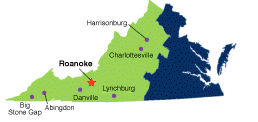[The following is part of an ongoing series about Sines v. Kessler, the civil suit against many of the main organizers of the August 2017 Unite the Right (UTR) rally in Charlottesville, Virginia. For an overview of the suit’s objectives and its many defendants, please see the first post in the series here.]
After two and a half long days of questioning potential jurors, the jury in the federal civil suit Sines v. Kessler has finally been impaneled. The following are some notes about how the jury selection process played out in this case and some of the pitfalls of using the courts to pursue far right actors.
Selecting a jury from even a very large pool was always going to be difficult. The problem is not simply that everyone who lives in the area knows something about what happened in August 2017, but that many or most of them already have well formed opinions about those events and would, in legalistic terms, have a difficult time setting those opinions aside. Moreover, potential jurors carry a lot of preconceived ideas about issues that establish the context for UTR: the removal of Confederate statues, the meaning or value of Black Lives Matter or antifa as social movements, the nature and validity of public protest in general, acknowledgment/denial of the existence of white supremacy, etc.
Because this case is being tried in a federal district court, the jury pool is not limited only to local Charlottesville residents. That may have opened the pool up to people with a bit less direct experience with UTR, but it falls far short of resolving the issue. One potential juror who was questioned on the second day, when asked if he could put aside his own preconceived ideas about UTR, replied “absolutely not.” He said he lived in Charlottesville at the time and knew people who had been assaulted by fascists from out of town. Referring to Heather Heyer, who died in the car attack on August 12, he could only say, “come on, man!” It was enough to make his sadness about what happened and his contempt for the organizers perfectly clear.

Even before opening statements have been made, jury selection has also opened up at least some of the fissures among the defendants. When one potential juror described them as “evil,” Judge Norman K. Moon was prepared to dismiss him for cause, but was interrupted by defendant Chris Cantwell. Aptly noting that “the other defendants will think I’m crazy,” Cantwell, who is acting as his own attorney, wanted to question the would-be juror further. He was supported in his request by Richard Spencer, who is also representing himself. At that point, one of the actually licensed attorneys representing other defendants intervened, arguing that an “obvious mistake” like this on the part of the pro se defendants were detrimental to the defendants at large. Judge Moon dismissed the juror and the issue was resolved, but it will be interesting to see how the internal conflicts among the defendants play out over the coming weeks.
Also of note: at some point on the second day, W. Edward ReBrook, attorney for Jeff Schoep and National Socialist Movement, had to go to the emergency room. Fellow defense attorney James Kolenich said that he is suffering from “a common medical issue” and he will be out of action for a few days. As of the third day, Kolenich, who already represents Jason Kessler, Nathan Damigo, and Identity Evropa, is filling in for him.
Limits of a Civil Suit
Equal Time for Conspiracy Theories
There are, of course, also structural problems with using the courts to pursue white nationalists and other groups whose ideology clearly lends itself to a denial of other people’s humanity. The voir dire process necessarily involves dismissing would-be jurors who one party or the other believes are irredeemably unfriendly to that party’s arguments. For one example, a potential juror indicated that she was, in plaintiffs’ attorney Karen Dunn’s words, “not at all concerned about racial animus.” Dunn raised a concern about that juror on the grounds that racial animus against Black, Jewish, and Latinx people is central to the plaintiffs’ case. At the same time, Cantwell has repeatedly described certain potential jurors as having “an extreme view on race” when their responses indicate that they do not see racism against white people as a serious issue.
The problem, then, is that the process is designed to form a jury that somehow splits the difference between two diametrically opposed views that are given equal weight: one that asserts that racial animus against Black, Jewish, and/or Latinx people exists and is a problem and one that insists that “anti-white racism” is a thing. The former idea is rooted not only in hundreds of years of US history, but also in recent empirical studies about sentencing guidelines and immigration policy, a documented increase in antisemitism, etc. The latter idea is primarily grounded in anxiety about loss of prestige amid changing demographics.
When antifascists talk about denying the far right a platform, the objective is precisely to avoid the kind of legitimation that accompanies a presentation of far right ideas in a public forum – ideas that regularly deny the basic humanity of other people. “No platform” is a controversial idea that is – and should be – continually revisited, debated, and at times rejected, as circumstances require. However, there is no point at which Hitler’s legacy ever needs to be debated or rehabilitated, as Cantwell seems eager to do.
Ultimately, the jury selection process is designed to produce a group of people who will decide the case after giving equal weight to some arguments that are underpinned by genuine long-standing social ills and others based on conspiracy theories. As such, that process is already committed to granting those arguments at least a certain degree of legitimacy. It is true that the defendants are being tried for allegedly engaging in a conspiracy to commit violence and not for their ideology per se, but there is no question that Cantwell or the deeply antisemitic defense attorneys Kolenich and Josh Smith will make it about ideology. Cantwell has promised as much.
The Specter of Antifa
Despite the objective of “ensur[ing] that nothing like this will happen again at the hands of the Defendants,” as stated in the plaintiffs’ Complaint, their attorneys appear to want to distance themselves and their clients from being construed as antifascists.
Several potential jurors who were questioned said that they believe that antifa is a terrorist organization and inherently violent, a viewpoint that Donald Trump, among others, very deliberately sought to promote during his tenure in the White House. On the first day of jury selection, Judge Moon made a distinction in his questions between antifa and the plaintiffs, who he characterized merely as “local protesters.” In turn, Dunn argued that potential jurors with “extreme views” about antifa would likely be unable to clearly see the plaintiffs other than through a lens of presumed violence due to preconceived notions about antifa. As a result, she noted that “we do agree that the plaintiffs in this case are not antifa.”
One problem with all of this is that not only the defendants, but also the judge and the plaintiffs’ attorney are perpetuating a “good protester/bad protester” dichotomy, whether or not that is their intention. The actual meaning of the term “antifa” has been a subject of much (often ill-informed) discussion in recent years, but it is best understood as simply meaning “antifascist” and can, at its broadest, be described as a highly decentralized social movement that is not defined by any particular set of tactics.
Nonetheless, because antifa is not actually a party to this case, this trial is not a forum that is well suited to establishing a clear understanding of what it is. That is of no great concern to, for instance, Chris Cantwell, who has already stated openly that he intends to cross-examine one plaintiff with the specific intention of linking him to antifa – a specter he has described in court as a terrorist organization that “hunts its enemies like dogs in the street.” Ultimately, if the plaintiffs’ attorneys are going to explicitly deny any connection between antifa and their clients, they will effectively be ceding an entire movement to the definition imposed by the likes of Cantwell. This might not be an unreasonable strategy in terms of winning a case for their clients (and, to be clear, their clients unquestionably deserve the win), however it also risks perpetuating a stigma – one that has been cultivated by far-right activists, media, and politicians – applied to a movement that utilizes an array of approaches, however imperfectly, to combat racism, antisemitism, misogyny, and fascism.
The Sines trial has already accomplished a number of things. As Integrity First for America points out, it has hamstrung Richard Spencer’s work and Matt Parrott has said that it is what caused the Traditionalist Workers Party to collapse, despite the obvious interpersonal turmoil among its leadership at the time. Anyone who has seen a social movement subjected to extensive legal action can vouch for the debilitating impact it can have. Witness, for example, the failed prosecution of the J20 arrestees, the green scare, or the targeted prosecutions of Black Lives Matter activists. (These all differ from Sines insofar as they involved criminal prosecution rather than civil suits and defendants were at risk of serious jail time. Nonetheless, the drain on resources is roughly comparable.) It is therefore not unreasonable to consider using the courts as one part of a multi-pronged approach to combating rising authoritarian populist movements. Nonetheless, antifascists would be doing ourselves a disservice if we were to fail to recognize the limits of any one approach by itself.

